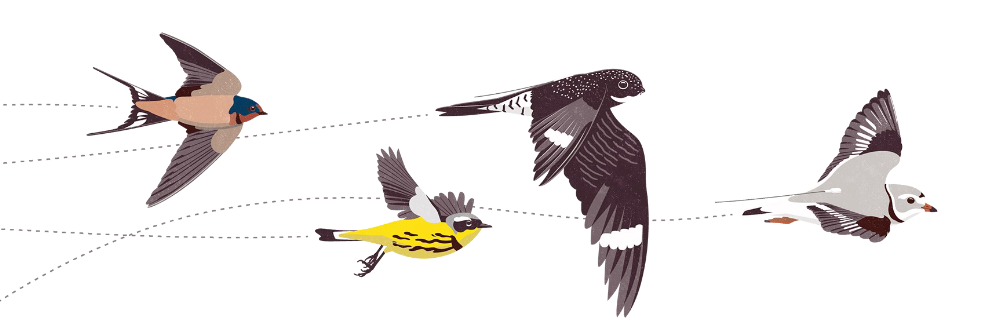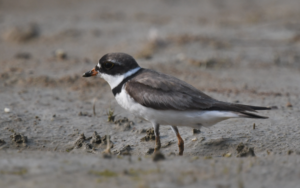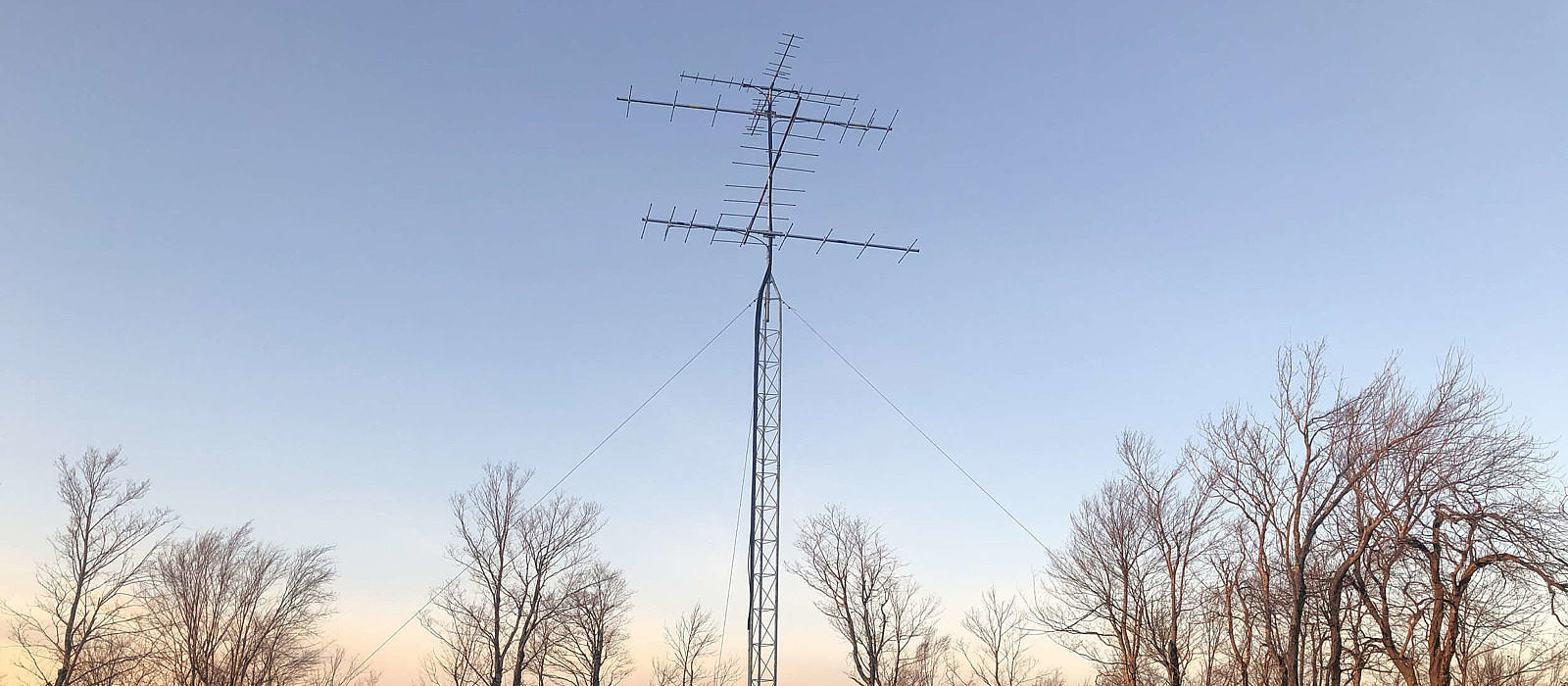A Revolution in Migration Research
In November 2020, with the installation of a new Motus Wildlife Tracking System station (motus.org) on our Granite Lake Headwaters property in Stoddard, the Harris Center joined a cutting-edge research network focused on the study of winged migration. Though it’s only been in existence since 2012, Motus (Latin for “motion”) has already revealed intimate, never-before-seen details about migration routes, timing, flight speed, stopover behavior, the locations of critical migratory and overwintering habitat, and more.
How It Works
Motus is comprised of small, lightweight radio transmitters (nanotags) that are affixed to shorebirds, songbirds, small owls, bats, and even butterflies, along with a network of antennas that detect the radio signals whenever a tagged animal flies within range.
Though there are no tagging projects in the Monadnock Region yet, any animal that has been tagged elsewhere and then flies within 15 miles or so of our station in Stoddard will be recorded. This station is sustainably powered by a solar panel, and transmits data via cell phone signal. Data can typically be viewed within days via a map at motus.org.

Species Spotlight

Our first detection of a tagged animal at the Granite Lake Headwaters Motus station was a Semipalmated Plover on the first leg of its fall migration. (photo © Eric Masterson)
Our very first detection took place on July 30, 2021, when a Semipalmated Plover tagged a month earlier on its breeding grounds in Churchill, Manitoba flew past the Granite Lake Headwaters station during the first leg of its fall migration. The very next day, that same bird was detected by a Motus receiver at the northern end of the Bay of Fundy, where it stayed until at least August 25.
Prior research has revealed that most of the Semipalmated Plovers that nest in Churchill fly either to the Bay of Fundy or over the Great Lakes to the mid-Atlantic coast in late summer before making their way along the coast to Suriname and French Guiana for the winter. Why did “our” plover head south through the Monadnock Region – 1,000 miles from Churchill – before flying 400 miles northeast to the Bay of Fundy? Good question — and one that, in time, the Motus network might help us answer.
What Sets Motus Apart?
For more than 100 years, scientists have been using bird banding – in which individual birds are captured, fitted with a metal band containing a unique number, and released back into the wild – to learn more about our feathered neighbors. Banding has provided vital insight into avian ecology, but it has one significant limitation: in most instances, banded birds need to be recaptured in order to yield this information, and the chances of re-sighting a banded bird are incredibly low.
In the last few decades, GPS and satellite transmitters — such as the ones used in our Broad-winged Hawk tracking project with Hawk Mountain — have led to more detailed data on bird movements and, in many cases, allowed biologists to retrieve data without recapturing individual birds. However, these technologies can only be used with larger species, who can support the added weight of the transmitters. By contrast, Motus nanotags can be safely attached to a diversity of smaller species, including songbirds, bats, and dragonflies. To date, more than 250 species worldwide have been tagged through the Motus network.
New England Motus
Initial Motus efforts focused largely on Atlantic, Gulf, and Great Lakes coastlines, but the New England Motus project aims to establish a series of 50 receiving stations in east-west “fencelines” that will detect tagged wildlife as they migrate north-south through interior Connecticut, Maine, Massachusetts, Rhode Island, Vermont, and New Hampshire. The Granite Lake Headwaters station was the first of these 50!
Project Partners
Partners on the New England project include New Hampshire Fish & Game, New Hampshire Audubon, Mass Audubon, Maine Audubon, the Maine Department of Inland Fisheries and Wildlife, the Massachusetts Division of Fisheries & Wildlife, the Carnegie Museum of Natural History, and the Willistown Conservation Trust.
Contact Us
For more information on the Harris Center’s Motus station, please contact Brett Amy Thelen by email.


